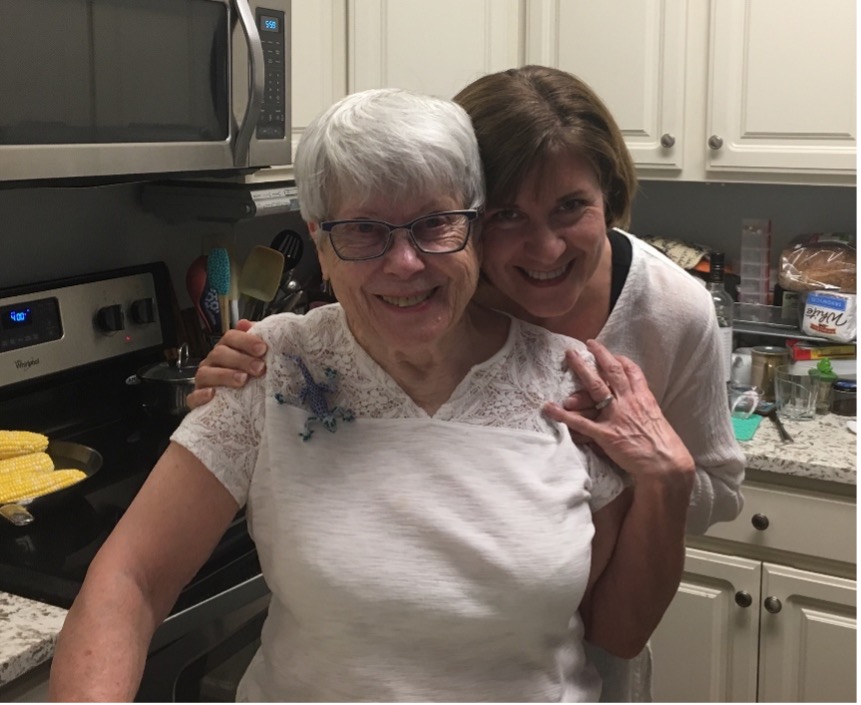A delicious meal takes more than ingredients, and empowered learning takes more than strategies

Dr. Loui Lord Nelson is a collaborating IDP consultant and author of Design and Deliver: Planning and Teaching Using Universal Design for Learning.
When I was a child, my mother made the most wonderful meals by simply opening the pantry and refrigerator doors, studying their contents, and putting her chosen ingredients together to make something delicious. As I grew older and was learning how to cook, I wanted to gain that skill. Fortunately, my mother shared her cookbooks and, more importantly, her guidance.
Through the cookbooks and conversations, my mom shared knowledge about things like complementary flavors, the texture of food, techniques of how to store food properly, the correct temperatures of cooked meat, how to choose fresh produce, and nutrition. Instead of handing me a recipe and some ingredients, my mother empowered me to understand the bigger concepts of cooking so all of my meals, regardless of the recipe, had a much better chance of being healthy and delicious.
Similar to the ingredients we use for cooking, there are many, many teaching strategies that can be combined to create a lesson and learning environment. Just like cooking, though, when you don’t understand the bigger picture, you can’t propel your students toward empowered learning.
Empowered learning happens when our children understand their own motivations and purpose for learning. They understand how to access and use the resources around them so they can gain the knowledge they desire. They apply strategy and goal-setting to their learning so they can remain on track regardless of distractions. Just as my mother helped me see beyond the simple ingredients in a recipe and instead comprehend the flavors, the mouth feel, and the harmony of the dish, educators can learn how to combine strategies in ways that empower all learners. This is where Universal Design for Learning (UDL) comes in.
By learning about and applying UDL, educators are able to understand why they are choosing a specific strategy and how a combination of particular strategies can create a pathway toward empowering learners. Educators become more empowered in their creation of engaging, powerful lessons that focus on student voice. With that empowerment, teachers help students make important decisions about their learning. With that empowerment, teachers can also see the growth and glow in their learners.
There are a multitude of pathways educators can take to learn about UDL, which makes it an interesting and challenging journey. Most adults around the world came through an educational system that predominantly taught every child in the same way at the same time. Think back to your days in the classroom. There were probably times when the teacher delivered the instruction and the students listened. When you were older, that type of delivery was called lecture. When the lesson was activity-based, you and your peers were likely doing the same thing. Everyone worked on an activity (e.g., a learning game or even a project), but everyone did the same thing or produced the same thing.
After decades of research, we can confidently say that learning needs to be more diversified. Different ways of learning need to happen in classrooms, but beyond that, all students need opportunities to choose what suits them. This is so they can gain the necessary skills needed to become empowered. To set this stage, teachers must know the goal of the lesson and then apply their teaching knowledge. Much like cooking, if you know what you want to make (e.g., chicken soup), you know which ingredients you must have (e.g. a chicken, water, garlic, onion, celery, salt, and pepper), and you know about ingredients that would enhance your dish (e.g. bay leaves, carrots, spinach, mushrooms, oregano, and rosemary), you’re able to create a delicious and unique meal. At a basic level, what does this look like in the classroom?
Let’s say your students need to comprehend a story they are reading. In an environment designed using UDL, some children might want to read (decode) the text on their own while others would prefer to partner read with another student. Other students might prefer to have the teacher read the story out loud. Students are able to choose which opportunity helps them meet the goal of comprehending the story.
Similar to knowing what dish you want to prepare, the teacher must know the goal. In this case, the goal is comprehension – understanding some aspect of the story. How the students achieve that goal is left to them. They can choose to decode on their own, decode with a partner, or listen to the story. If some children struggle with decoding, they can still participate and work on their comprehension. Other students might not struggle with comprehension, but they would rather listen to the story on that day. Then, they are able to demonstrate their comprehension in a way that suits them. They could draw a picture, write down their answers, verbally share their answer, or even write a poem! Because the goal of the lesson is defined, it doesn’t matter. They are all working on and demonstrating their comprehension.
Now you can see why this is a significant journey for some educators. Fortunately, educators around the world are learning about and embracing UDL. They are learning how to use UDL as a decision-making tool. They are using it to guide how they put together their lessons and how they run their classroom. UDL is wide and deep, but can be exciting to learn about and apply. Watching students become excited about learning, share their epiphanies, and demonstrate empowerment are all outcomes supported by UDL.
My mother is no longer living, but my family and I benefit every day from the bigger lessons she taught me about cooking. I am able to make nutritious and delicious meals whether or not I choose to open a cookbook. She helped me see the bigger picture. She empowered me in my own cooking journey. Likewise, I envision a world where all educators empower all learners through the use of UDL.
